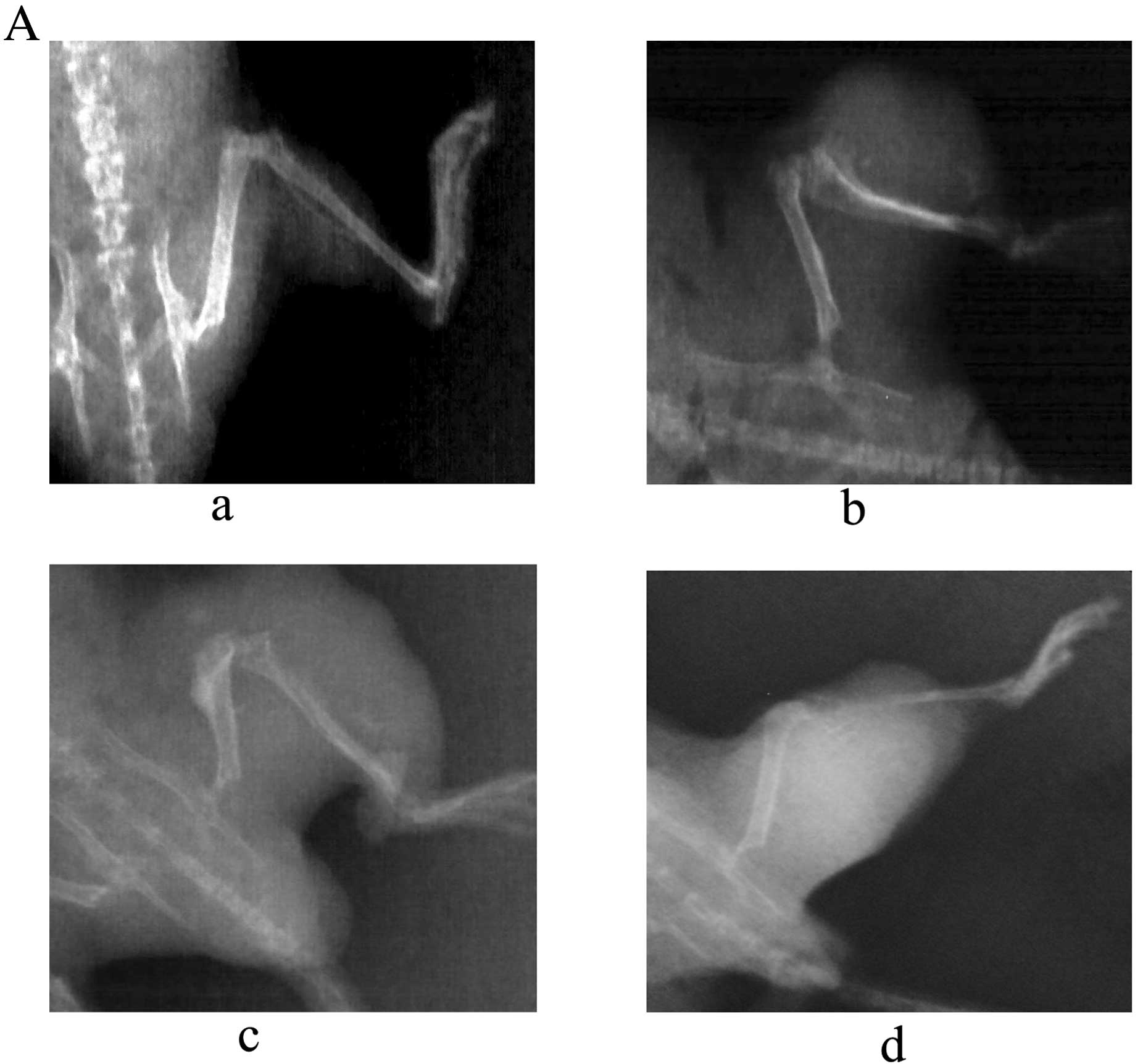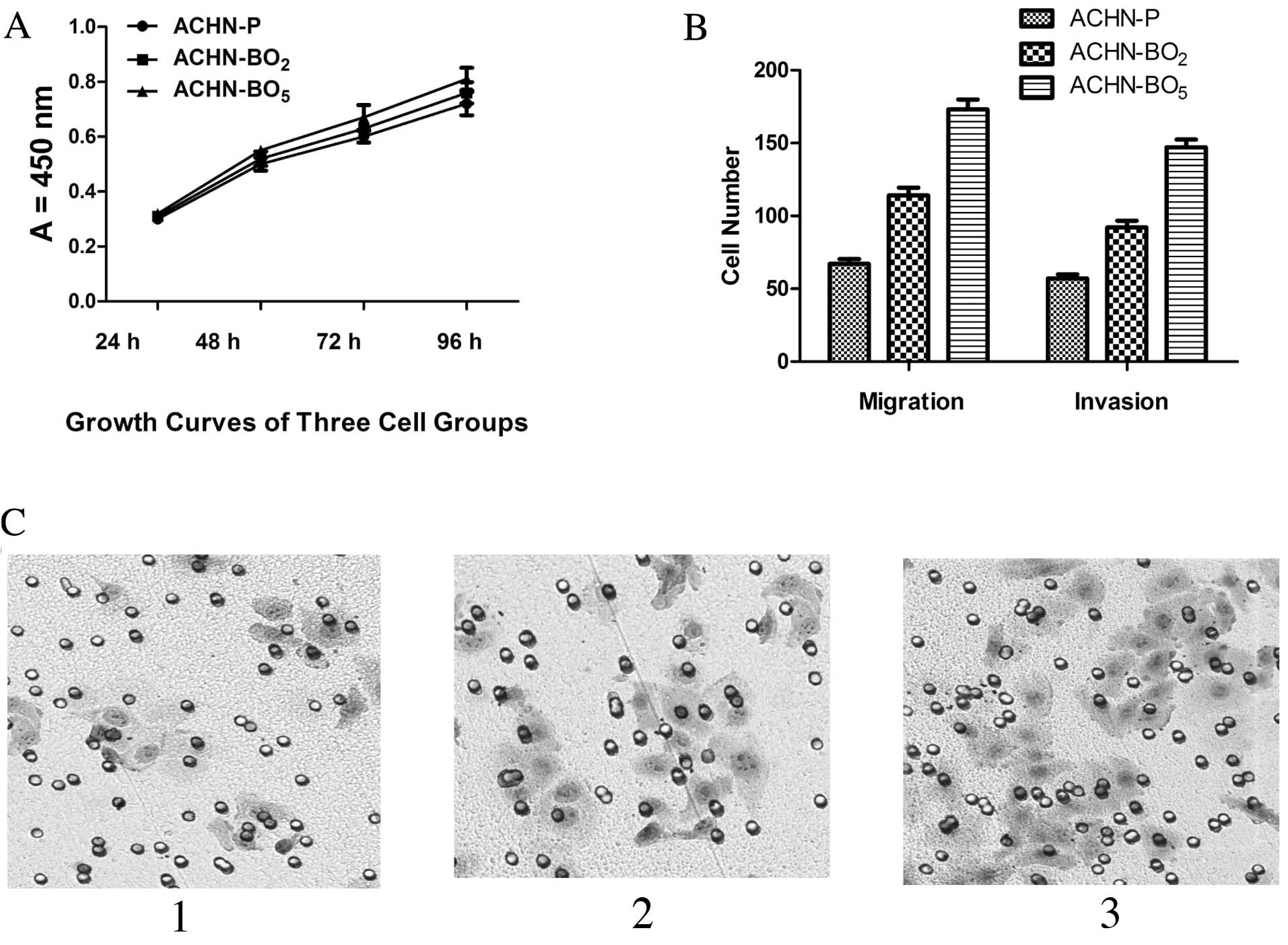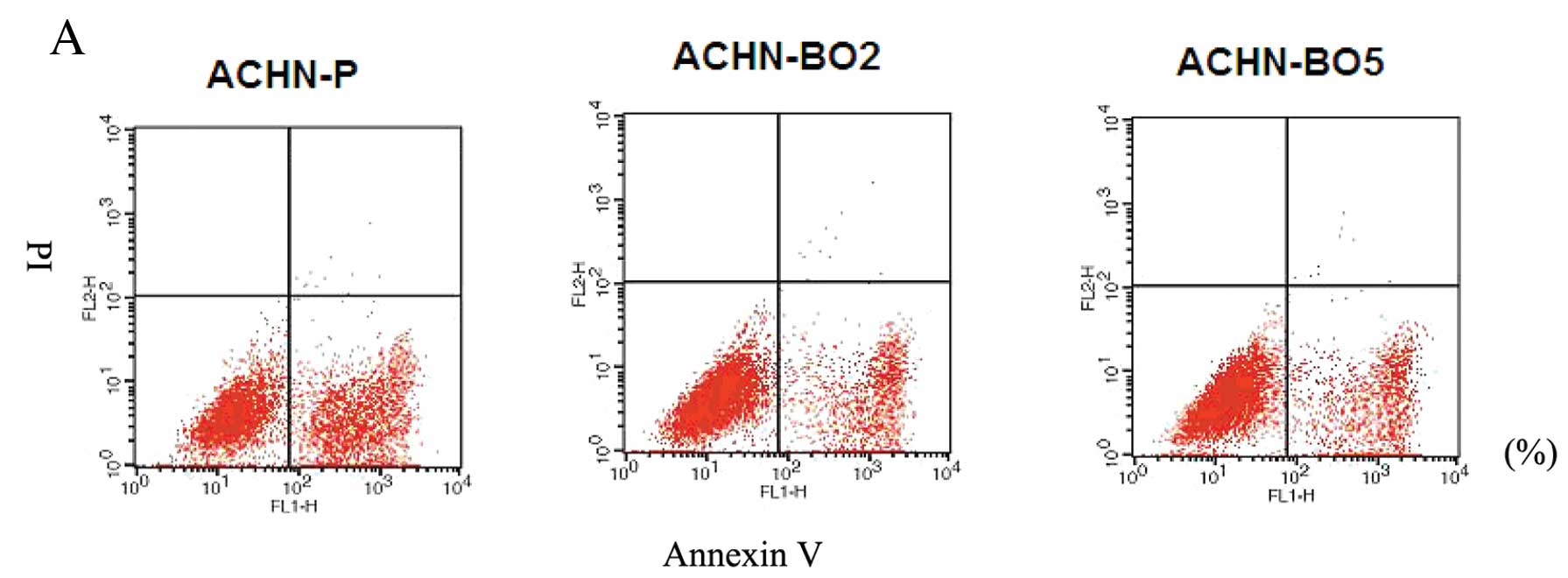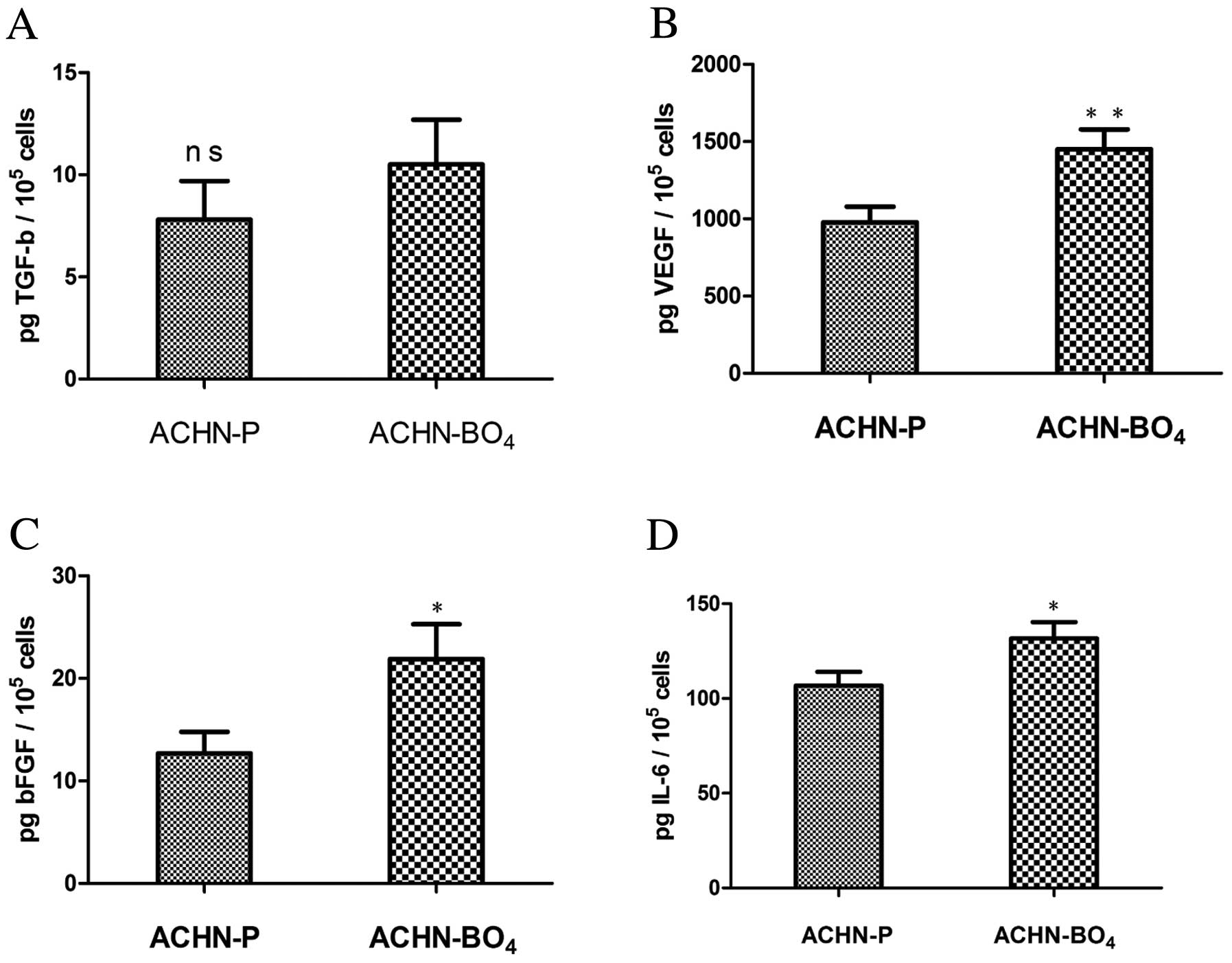|
1
|
Figlin RA: Renal cell carcinoma:
management of advanced disease. J Urol. 161:381–387. 1999.
View Article : Google Scholar : PubMed/NCBI
|
|
2
|
Zekri J, Ahmed N, Coleman RE and Hancock
BW: The skeletal metastatic complications of renal cell carcinoma.
Int J Oncol. 19:379–382. 2001.PubMed/NCBI
|
|
3
|
Jemal A, Tiwari RC, Murray T, et al:
Cancer statistics, 2004. CA Cancer J Clin. 54:8–29. 2004.
View Article : Google Scholar
|
|
4
|
Galasko CS: Bone metastases studied in
experimental animals. Clin Orthop Relat Res. 1981:269–285.
1981.
|
|
5
|
Durr HR, Maier M, Pfahler M, Baur A and
Refior HJ: Surgical treatment of osseous metastases in patients
with renal cell carcinoma. Clin Orthop Relat Res. 283–290.
1999.PubMed/NCBI
|
|
6
|
Iwai A, Fujii Y, Kawakami S, et al:
Down-regulation of vascular endothelial growth factor in renal cell
carcinoma cells by glucocorticoids. Mol Cell Endocrinol. 226:11–17.
2004. View Article : Google Scholar : PubMed/NCBI
|
|
7
|
Takahashi A, Sasaki H, Kim SJ, et al:
Markedly increased amounts of messenger RNAs for vascular
endothelial growth factor and placenta growth factor in renal cell
carcinoma associated with angiogenesis. Cancer Res. 54:4233–4237.
1994.
|
|
8
|
Motzer RJ and Russo P: Systemic therapy
for renal cell carcinoma. J Urol. 163:408–417. 2000. View Article : Google Scholar : PubMed/NCBI
|
|
9
|
Weber K, Doucet M and Kominsky S: Renal
cell carcinoma bone metastasis - elucidating the molecular targets.
Cancer Metastasis Rev. 26:691–704. 2007. View Article : Google Scholar : PubMed/NCBI
|
|
10
|
Takahashi N, MacDonald BR, Hon J, et al:
Recombinant human transforming growth factor-alpha stimulates the
formation of osteoclast-like cells in long-term human marrow
cultures. J Clin Invest. 78:894–898. 1986. View Article : Google Scholar : PubMed/NCBI
|
|
11
|
Kominsky SL, Doucet M, Brady K and Weber
KL: TGF-beta promotes the establishment of renal cell carcinoma
bone metastasis. J Bone Miner Res. 22:37–44. 2007. View Article : Google Scholar : PubMed/NCBI
|
|
12
|
Mydlo JH, Michaeli J, Cordon-Cardo C,
Goldenberg AS, Heston WD and Fair WR: Expression of transforming
growth factor alpha and epidermal growth factor receptor messenger
RNA in neoplastic and nonneoplastic human kidney tissue. Cancer
Res. 49:3407–3411. 1989.PubMed/NCBI
|
|
13
|
Aebersold DM, Froehlich SC, Jonczy M, et
al: Expression of transforming growth factor-alpha, epidermal
growth factor receptor and platelet-derived growth factors A and B
in oropharyngeal cancers treated by curative radiation therapy.
Radiother Oncol. 63:275–283. 2002. View Article : Google Scholar
|
|
14
|
Pan J, Mestas J, Burdick MD, et al:
Stromal derived factor-1 (SDF-1/CXCL12) and CXCR4 in renal cell
carcinoma metastasis. Mol Cancer. 5:562006. View Article : Google Scholar : PubMed/NCBI
|
|
15
|
Rosol TJ, Tannehill-Gregg SH, LeRoy BE,
Mandl S and Contag CH: Animal models of bone metastasis. Cancer.
97:748–757. 2003. View Article : Google Scholar : PubMed/NCBI
|
|
16
|
Arguello F, Baggs RB and Frantz CN: A
murine model of experimental metastasis to bone and bone marrow.
Cancer Res. 48:6876–6881. 1988.PubMed/NCBI
|
|
17
|
Yoneda T, Sasaki A, Dunstan C, et al:
Inhibition of osteolytic bone metastasis of breast cancer by
combined treatment with the bisphosphonate ibandronate and tissue
inhibitor of the matrix metalloproteinase-2. J Clin Invest.
99:2509–2517. 1997. View Article : Google Scholar : PubMed/NCBI
|
|
18
|
Otsuka S, Hanibuchi M, Ikuta K, et al: A
bone metastasis model with osteolytic and osteoblastic properties
of human lung cancer ACC-LC-319/bone2 in natural killer
cell-depleted severe combined immunodeficient mice. Oncol Res.
17:581–591. 2009. View Article : Google Scholar : PubMed/NCBI
|
|
19
|
Liu H, Chen A, Guo F and Yuan L: A
short-hairpin RNA targeting osteopontin downregulates MMP-2 and
MMP-9 expressions in prostate cancer PC-3 cells. Cancer Lett.
295:27–37. 2010. View Article : Google Scholar : PubMed/NCBI
|
|
20
|
Kelland LR: Of mice and men: values and
liabilities of the athymic nude mouse model in anticancer drug
development. Eur J Cancer. 40:827–836. 2004.PubMed/NCBI
|
|
21
|
Bibby MC: Orthotopic models of cancer for
preclinical drug evaluation: advantages and disadvantages. Eur J
Cancer. 40:852–857. 2004. View Article : Google Scholar : PubMed/NCBI
|
|
22
|
Hawk ET, Umar A, Lubet RA, Kopelovich L
and Viner JL: Can animal models help us select specific compounds
for cancer prevention trials? Recent Results Cancer Res. 166:71–87.
2005. View Article : Google Scholar : PubMed/NCBI
|
|
23
|
Shaw TJ, Senterman MK, Dawson K, Crane CA
and Vanderhyden BC: Characterization of intraperitoneal,
orthotopic, and metastatic xenograft models of human ovarian
cancer. Mol Ther. 10:1032–1042. 2004. View Article : Google Scholar : PubMed/NCBI
|
|
24
|
Hauschka PV, Mavrakos AE, Iafrati MD,
Doleman SE and Klagsbrun M: Growth factors in bone matrix.
Isolation of multiple types by affinity chromatography on
heparin-Sepharose. J Biol Chem. 261:12665–12674. 1986.PubMed/NCBI
|
|
25
|
Pfeilschifter J and Mundy GR: Modulation
of type beta transforming growth factor activity in bone cultures
by osteotropic hormones. Proc Natl Acad Sci USA. 84:2024–2028.
1987. View Article : Google Scholar : PubMed/NCBI
|
|
26
|
Kretzschmar M, Doody J, Timokhina I and
Massague J: A mechanism of repression of TGFbeta/Smad signaling by
oncogenic Ras. Genes Dev. 13:804–816. 1999. View Article : Google Scholar : PubMed/NCBI
|
|
27
|
Luo K, Stroschein SL, Wang W, et al: The
Ski oncoprotein interacts with the Smad proteins to repress TGFbeta
signaling. Genes Dev. 13:2196–2206. 1999. View Article : Google Scholar : PubMed/NCBI
|
|
28
|
Onichtchouk D, Chen YG, Dosch R, et al:
Silencing of TGF-beta signalling by the pseudoreceptor BAMBI.
Nature. 401:480–485. 1999. View
Article : Google Scholar : PubMed/NCBI
|
|
29
|
Stroschein SL, Wang W, Zhou S, Zhou Q and
Luo K: Negative feedback regulation of TGF-beta signaling by the
SnoN oncoprotein. Science. 286:771–774. 1999. View Article : Google Scholar : PubMed/NCBI
|
|
30
|
Dvorak HF: Vascular permeability
factor/vascular endothelial growth factor: a critical cytokine in
tumor angiogenesis and a potential target for diagnosis and
therapy. J Clin Oncol. 20:4368–4380. 2002. View Article : Google Scholar : PubMed/NCBI
|
|
31
|
Rini BI and Small EJ: Biology and clinical
development of vascular endothelial growth factor-targeted therapy
in renal cell carcinoma. J Clin Oncol. 23:1028–1043. 2005.
View Article : Google Scholar : PubMed/NCBI
|
|
32
|
Gorospe M, Egan JM, Zbar B, et al:
Protective function of von Hippel-Lindau protein against impaired
protein processing in renal carcinoma cells. Mol Cell Biol.
19:1289–1300. 1999.PubMed/NCBI
|
|
33
|
Semenza G: Signal transduction to
hypoxia-inducible factor 1. Biochem Pharmacol. 64:993–998. 2002.
View Article : Google Scholar : PubMed/NCBI
|
|
34
|
Iguchi H, Yokota M, Fukutomi M, et al: A
possible role of VEGF in osteolytic bone metastasis of
hepatocellular carcinoma. J Exp Clin Cancer Res. 21:309–313.
2002.PubMed/NCBI
|
|
35
|
Yang Q, McHugh KP, Patntirapong S, Gu X,
Wunderlich L and Hauschka PV: VEGF enhancement of osteoclast
survival and bone resorption involves VEGF receptor-2 signaling and
beta3-integrin. Matrix Biol. 27:589–599. 2008. View Article : Google Scholar : PubMed/NCBI
|
|
36
|
Hurley MM, Lee SK, Raisz LG, Bernecker P
and Lorenzo J: Basic fibroblast growth factor induces osteoclast
formation in murine bone marrow cultures. Bone. 22:309–316. 1998.
View Article : Google Scholar : PubMed/NCBI
|
|
37
|
Blay JY, Negrier S, Combaret V, et al:
Serum level of interleukin 6 as a prognosis factor in metastatic
renal cell carcinoma. Cancer Res. 52:3317–3322. 1992.PubMed/NCBI
|
|
38
|
Negrier S, Perol D, Menetrier-Caux C, et
al: Interleukin-6, interleukin-10, and vascular endothelial growth
factor in metastatic renal cell carcinoma: prognostic value of
interleukin-6 - from the Groupe Francais d’Immunotherapie. J Clin
Oncol. 22:2371–2378. 2004.PubMed/NCBI
|



















